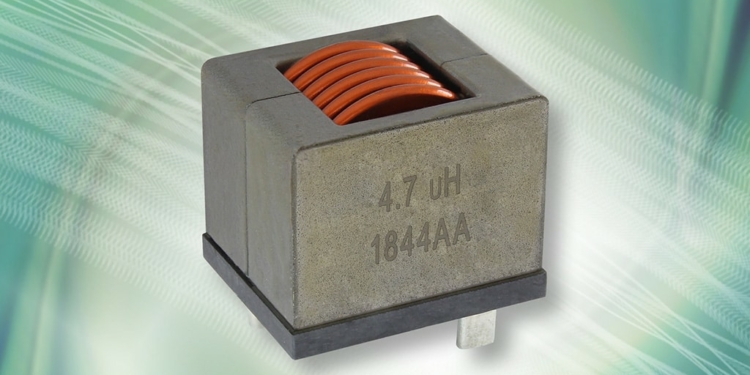Source: Vishay, Globe Newswire news
MALVERN, Pa.,Vishay Intertechnology, Inc. (NYSE: VSH) today introduced a new IHDM edge-wound, through-hole inductor with rated current up to 150 A for industrial and military applications. Featuring a powdered iron alloy core technology, the Vishay Custom Magnetics IHDM-1008BC-30 provides stable inductance and saturation over a demanding operating temperature range from -40 °C to +180 °C with low power losses and excellent heat dissipation.
The edge-wound coil of the device released today provides low DCR down to 0.25 mΩ, which minimizes losses and improves rated current performance for increased efficiency. Compared to competing ferrite-based solutions, the IHDM-1008BC-30 offers 30 % higher rated current and 30 % higher saturation current levels at +125 °C. The inductor’s soft saturation provides a predictable inductance decrease with increasing current, independent of temperature.
With an operating voltage up to 350 V, the device is ideal for DC/DC converters, inverters, motor and switching noise suppression, and high power switchmode power supplies in high current, high temperature applications, including industrial solar systems and charging stations for electric vehicles, as well as military defense systems.
The IHDM-1008BC-30’s standard terminals are stripped and tinned for through-hole mounting. Designed with ER2519 powered iron core, the dimensions are 25 mm x 20 mm x 23 mm. Vishay can customize the device’s mounting method, and performance, upon request. Options include bare copper, surface-mount, and press fit. To reduce the risk of whisker growth, the inductor features a hot-dipped tin plating. The device is RoHS-compliant, halogen-free, and Vishay Green.
Device Specification Table:
| Dimensions (mm) | 25 x 20 x 23 | |
| Inductance (µH) | 1.2 to 10 | |
| DCR typ. (mΩ) | 0.25 to 1.70 | |
| DCR max. (mΩ) | 0.30 to 2.0 | |
| Heat rating current (A) | 30 to 80 | |
| Saturation current (A) | 30 to 110(1) / 45 to 150(2) | |
| SRF typ. (MHz) | 8 to 90 |
(1) DC current (A) that will cause L0 to drop approximately 20 %
(2) DC current (A) that will cause L0 to drop approximately 30 %
Samples and production quantities of the new inductor are available now, with lead times of 12 weeks.































